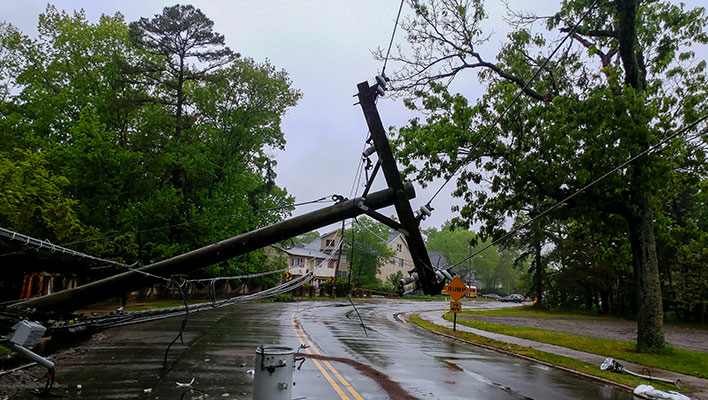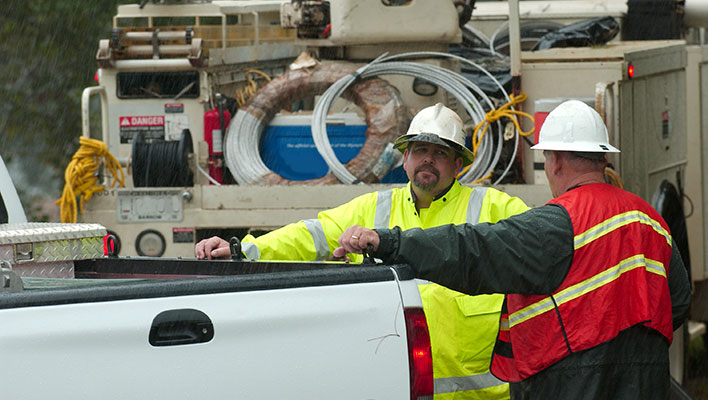With more than 30 years of experience with a leading investor owned utility, Jamie Conover brings a valuable perspective to the ARCOS blog. Drawing on his extensive background in technical performance, optimization, and incident command for electric transmission, distribution, and natural gas operations, he offers strategies to increase business agility and hit moving business targets amidst shifting workforce dynamics and climate change that is leading to more frequent and severe outages.
In my last blog post I talked about the need for utilities, cooperatives, and municipal providers to embrace digital transformation to match the increasing number and severity of storms brought about by climate change. Teams must restore power and other critical services impacted by what seems like an endless series of storm events brought on by disruption to El Nino weather patterns, thunderstorms with straight line winds, and torrential rainfall. All of this happening amidst a big crew change as an older generation retires and fewer young line workers take their place with many utilities filling their workforce gap with contractors.
So far this year, storm activity has been steady, even in our Midwest service area where a microburst cut power for more than 300,000 customers. During an outage of this scale, we call on others for assistance, placing a tremendous burden on the back office to pivot from daily routine operations and orchestrate the movement of a constantly evolving mix of employees and non-native crews. Due to these increasing storm events across the country, we are also caught up in what is happening to other utilities who rely on us for mutual assistance to respond and restore services, underscoring the need to efficiently track and manage our workers as they are deployed in service areas far from home.
Storm Response Logistical Challenges
Whether we are preparing to send our own full-time employees into another service area for restoration work or receiving mutual assistance, tracking large numbers of line workers who are operating out of their normal area is extremely complex, making critical questions difficult to answer in the moment, including:
- What is the estimated time of arrival for inbound mutual assistance crews?
- How can resources best be deployed to critical restoration sites?
- Where are crews located and how can this be reported to local constituents?
- What are the lodging, meal and fuel requirements for crews?
- What steps can be taken to minimize paid wait time and reduce storm restoration costs?
- When storm path changes, how can resources be best redirected?
The large scale administrative challenge of identifying the right mutual assistance crews has thankfully been greatly simplified through recent digital advancements and coordination among RMAGs, culminating in the Resource Allocation Management Program for Utility Personnel (RAMP-UP) system. For an impacted utility confronted by widespread outages and system damage though, receiving a long list of allocated non-native crews and then quickly deciding how and where to deploy them is daunting to say the least.
Smart Mutual Assistance Resource Tracking
As it turns out, there is a simple and modern solution to the logistical challenges of directing and tracking storm response crews, and it’s in the pocket of almost every employee and contractor. Smart phones provide instant communication with resources while also automatically providing geospatial data through GPS.
In addition to ARCOS Callout and Crew Manager, we also rely on sMART (Mutual Aid Resource Tracker), a mobile app specifically designed to efficiently guide crews to their destination while keeping the back office fully updated. Once we have received a list of mutual assistance resources from RAMP-UP, we can simply e-mail a link to download the sMART mobile app along with the sMART system generated storm code, so as soon as the crew logs into the sMART mobile app it begins streaming location data and capturing critical information, such as contact details and the number of crew members and number of vehicles, along with fuel types needed. sMART provides real-time information on resources responding to an event while automatically calculating arrival times to staging areas, given current traffic and available drive-time conditions. By seeing where crews are, the technology enables restoration work to start much sooner and get the lights back on faster.
sMART enables mutual assistance crews to arrive more efficiently and safely at assigned staging areas by providing turn by turn driving directions, or alerts for job destination changes. It significantly lowers cost of restoration by reducing paid wait time from crews waiting to be assigned to a staging area and by providing the ability to reassign resources when conditions change. Because sMART centralizes all crew locations on a live map, managers can easily track progress, improve situational awareness, and improve safety.
Switching back from red sky work to blue sky, many utilities find they must still manage an increasing number of contractors for day to day operations, the topic of my next blog. Be sure to reach out with any questions along the way as I continue this series on how our industry can deploy the right digital strategies to increase workforce agility and hit moving business targets.
Did you enjoy Jamie’s blog? Check out his previous post: Hitting the Moving Workforce Management Target




